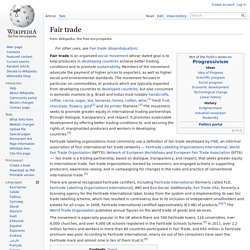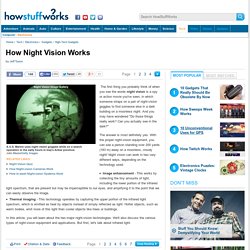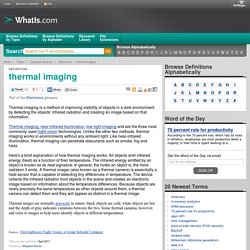

Département RST. What Fairtrade does. Fairtrade is about better prices, decent working conditions and fair terms of trade for farmers and workers.

It’s about supporting the development of thriving farming and worker communities that have more control over their futures and protecting the environment in which they live and work. And it’s your opportunity to connect with the people who grow the produce that we all depend on. What does the FAIRTRADE Mark mean? When you buy products with the FAIRTRADE Mark, you support farmers and workers as they work to improve their lives and their communities. The Mark means that the Fairtrade ingredients in the product have been produced by small-scale farmer organisations or plantations that meet Fairtrade social, economic and environmental standards. Fair trade. Fair trade is an organized social movement whose stated goal is to help producers in developing countries achieve better trading conditions and to promote sustainability.

Members of the movement advocate the payment of higher prices to exporters, as well as higher social and environmental standards. The movement focuses in particular on commodities, or products which are typically exported from developing countries to developed countries, but also consumed in domestic markets (e.g. Brazil and India) most notably handicrafts, coffee, cocoa, sugar, tea, bananas, honey, cotton, wine,[1] fresh fruit, chocolate, flowers, gold[2] and 3D printer filament.[3] The movement seeks to promote greater equity in international trading partnerships through dialogue, transparency, and respect.
The Future of Fair Trade…Is There One? If Fair Trade coffee quality doesn’t improve, the Direct Trade movement will quickly become a growing threat.

Quality control workers in the packing plant of a large Sumatran coffee co-op. Over the past 15 years, Fair Trade Labeling Organizations International (FLO) and Fair Trade labels have played an important role in driving consumer awareness and demand for socially and environmentally sourced products. For years, FLO/Fair Trade have been flag bearers for small-holder empowerment and have pushed a desperately needed agenda. But today, serious questions loom about the relevance of Fair Trade organizations and labels. How Night Vision Works - HowStuffWorks. The first thing you probably think of when you see the words night vision is a spy or action movie you've seen, in which someone straps on a pair of night-vision goggles to find someone else in a dark building on a moonless night.

And you may have wondered "Do those things really work? Can you actually see in the dark? " The answer is most definitely yes. With the proper night-vision equipment, you can see a person standing over 200 yards (183 m) away on a moonless, cloudy night! Night vision can work in two very different ways, depending on the technology used. In this article, you will learn about the two major night-vision technologies. Thermal%20Imaging%20in%20Electronic%20Equipment%20Applications.pdf. Detection of Failures in Electronics Equipment using FLIR’s Thermal Imaging Camera Technology. By AZoM.com Staff Writers Table of Content Introduction Overview of EST srl Thermal Imaging Multi Spectral Dynamic Imaging Affordable Cameras Conclusion About FLIR Commercial Systems Introduction Overview of EST srl EST srl specializes in the sale and rental of measuring instruments for photovoltaic systems, wholesale photovoltaic material, electronics, tools for testing and monitoring photovoltaic systems, calibration of measuring instruments for electronics, reconditioning services and repair.

Detection of Failures in Electronics Equipment using FLIR’s Thermal Imaging Camera Technology. What is thermal imaging? - Definition from WhatIs.com. Thermal imaging is a method of improving visibility of objects in a dark environment by detecting the objects' infrared radiation and creating an image based on that information.

Thermal imaging, near-infrared illumination, low-light imaging and are the three most commonly used night vision technologies. Unlike the other two methods, thermal imaging works in environments without any ambient light. Like near-infrared illumination, thermal imaging can penetrate obscurants such as smoke, fog and haze. Here's a brief explanation of how thermal imaging works: All objects emit infrared energy (heat) as a function of their temperature. The infrared energy emitted by an object is known as its heat signature. Thermal images are normally grayscale in nature: black objects are cold, white objects are hot and the depth of gray indicates variations between the two.
Source: Electrophysics Night Vision, a Group Sofradir Company. Thermovision. Thermovision recording. The highest quality measurement and analysis guarantees the certificate ITC Level 1.

ITC Certificate is a document INFRARED TRAINING CENTER (an international center of research training in the infrared, with headquarters in Stockholm, Sweden), stating qualifications in exercise and reading and commenting on the tests and measurements in infrared light. For more information on ITC certificates at www.infraredtraining.com Using infrared images is becoming increasingly popular and steadily gaining new fields of applications. In some areas of research performance thermal imaging is now commonplace, and even considered necessary. RCC Nova offers professional comprehensive thermovision studies for the industry.
For the measurements we use the highest quality infrared equipment: laboratory and industrial cameras of FLIR SYSTEMS. What is a thermovision? The principle of operation. Formation à « l’ECG de A à Z » par Pierre Taboulet. Axe du champ électrique généré par les cellules cardiaques lors de l'activation biventriculaire.

Il renseigne sur la « force électrique » produite par la résultante des dépolarisations ventriculaires gauche et droite assimilé à un vecteur unique. Il est dirigé physiologiquement vers la gauche, en bas et en arrière. Le symbole utilisé pour « axe des QRS » dans la littérature médicale est ÂQRS. Dans le plan frontal, l’ÂQRS peut se calculer de plusieurs façons : - On mesure la valeur absolue de l’amplitude du QRS en millimètres (déflexion positive - déflexion négative) dans deux dérivations frontales; puis on projette ces valeurs sur un schéma triaxial (cf. . - On repère la dérivation frontale la plus isoélectrique (amplitude nulle) et on choisit la perpendiculaire dont le QRS est positif (ex. si QRS isoélectrique en DII et positif en DI è ÂQRS -30°).
L'axe moyen du cœur dans le plan frontal est situé entre 30 et 60°, mais selon l’âge et la morphologie, il peut être normal entre 0° et 100°.